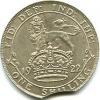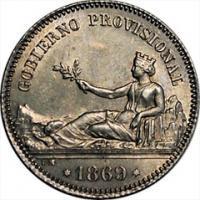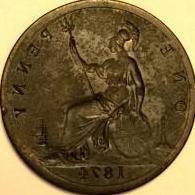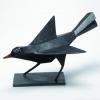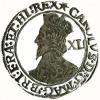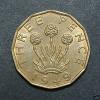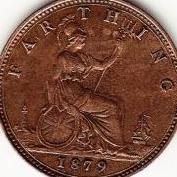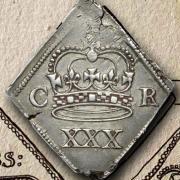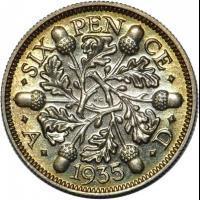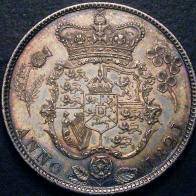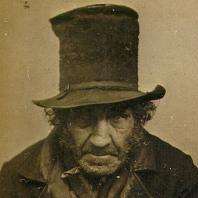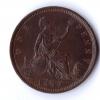Leaderboard
Popular Content
Showing content with the highest reputation on 09/06/2016 in all areas
-
2 points
-
I'm happy, first purchases in LCA. 2 wins out of 3 bids, both within the range I was expecting. Now I'm looking forward to see how they look in hand. I've got the impression that this house grades generously.2 points
-
I think you're on the right lines Sword. With hammered, my view is that grade is not always as important as 'eye appeal', by which I mean for example that a slightly more worn coin that is centrally struck can be more pleasing than one that is crisper but has bits missing or a weak area. Obviously full flan, nicely toned EF examples are ideal, but generally I've found some compromise is usually needed! I suspect everyone has their own criteria as to what is essential in a coin and what weaknesses are forgivable, though it takes time to develop an eye for this and views can and do change with time. In other words, collecting hammered is a much more personal and subjective thing than with later milled coins. That said, your round / well centred / no weak areas / decent enough grade, with rather good details and / full flan covers the main areas well enough. Now you just need to buy a few more! I guess the only other thing I would add is that I have found comparison useful in my own collecting. A few (more modern, as they tend to be more fully illustrated and sometimes in colour) auction catalogues for decent collections can be a useful investment, enabling you to see what discerning collectors selected as an example (or in some cases had to make do with) of a particular coin. Then you just have to look for similar or better! Obviously it's easier if you have a particular area that interests you. Any idea what you'd like to buy next?1 point
-
It is difficult and entirely depends where you want to go with your collection, I think the main reason the powerhouses get to the stage of micro varieties is because the initial list was filled, then the subsequent additions get filled, then when running out of things to collect, start to really scrutinize every coin, looking for differences. At the moment I collect (pennies) all the years, mint marks, the main recognised varieties like 1903 open 3, 1911 Gouby X, recessed ear varieties etc, and then have a side collection for anything of interest. There are some I have like the missing wave varieties that I don't want to include in my collection because they're caused by the natural process of minting coins and not by purposeful design changes. If you haven't already, I'd definitely recommend getting literature on your area of collecting because there are some excellent books out there to help you along the way.1 point
-
I am now. Thanks for the heads up. Managed to retrieve the second one from ITV player and watched it - and just seen the third one "Brocket Hall" earlier on. Absolutely brilliant, even if, as you suggest, "dumbed down". Even if only some of the narrative is true, what a formidable woman Victoria must have been.1 point
-
1 point
-
That's not very nice of him! Anyway, to your question... Like you, I don't care about small varieties, but probably because I'm a beginner and for now I just aspire at having a different type rather than year, not to mention die or variety. In a few years I suppose I may have developed a liking for a certain denomination and/ or historical period, and that may lean me to study some of these subjects as the more experienced collectors do.1 point
-
I think it probably depends on the type of collector you are (no pun intended). I'm similar to you in the sense that I'm not setting out to obtain different varieties of the same denomination and date, but reading about them here certainly raises my awareness of them. I suppose it's a spectrum really - I mean, most coin collectors probably know about things like the H and KN pennies of 1912, 1918 and 1919, the 1926 ME penny and the 1902 low tide penny for example. Coming on here opens your eyes to further varieties, such as different versions of a number (1903 open 3 penny for example) or different date widths (1889 penny for example, I think). Then I doff my cap to the real Forum Gods especially the penny collectors when they show pictures of even more micro-varieties and/or impacts of die wear evolution! I think if you're into collecting certain denominations, the varieties keep it interesting and give you something to try and find. But someone like me, and for a given budget, would rather have examples of different types of coins in my collection rather than different varieties of the same coin. It's an adventure either way!1 point
-
1 point
-
I actually have a "prooflike" example of a 1951 crown and it only cost me £5 even without the box (I never really wanted the box anyway) and yes it is Prooflike But I suspect most of these crowns in their boxes also were never looked after as well as the proof sets so over the years so only a true proof coin looks like the real mccoy. Unless someone invents a time machine so we can go back and inspect the originals back then1 point
-
I seem to never be able to upload decent size images on here. I'll be putting up the images on the website tonight though1 point
-
1 point
-
MAG, BRIT, FRAN and HIB can be shortened further. It could possibly be a means of differentiating between moneyers(?) You tend not to see these type 3s with multiple pellet stops, whereas the large upturn in mint output during 'plume' ( a 15-fold increase over heart) resulted in the appearance of a lot of dies with up to seven pellets instead of the previous one or two pellet stops, the latter either as colons or wedge and pellet. To me this only makes sense in the context of increased mint output, i.e. you would need more engravers to produce the dies. There is circumstantial evidence to support this theory in the Royalist provincial coins where I have compiled a list that gives well over 90% correlation between the number of pellets or other marks, time of striking and location based on military activity. All this points towards some form of overall control and personal accountability for dies. In arriving at this conclusion I have made the assumption that old habits die hard, and if some form of control existed before the war, so it would be logical to extend working practices along the same lines to which everyone was accustomed. In that way you can follow the tracks of several individuals around the country.1 point
-
That wasn't a bad coin and was on my list to buy if cheap enough. I think you paid a full price for it, but it a nice round coin. It isn't a rare coin. I'd go with VF. I thought there was a trace of a portcullis underneath the bell from a previous incarnation of the die. Traces of a former die are quite common, and in the case of portcullis was used on the previous type of halfcrown issued, being the mark that preceded bell. Not sure what you mean about missing letters as they are all there, though the S is double struck, but this is common and a function of the number of blows required to fully strike up the coin. The date is as per Spink and the number 60 comes from the list of mint marks compiled originally by Seaby. This is a question that's asked on a regular basis. The list has been published in Seaby's and subsequently Spink's annual tome ever since the book was published, and is a damning indictment of laziness on the part of many collectors who don't bother reading from cover to cover. p.535-7 in the current volume refers,1 point
-
My 1951 proof set is in a red box. The reason for my question surrounds the 1951 crown in particular ... yes it is stunning but in the individual boxes it s plentiful and fetches £5-£10. Not sure the example in the 'proof' set is any different. Spink describes it as 'proof-like' and worth £15 in UNC (2015). I thought the Penny would be the most sought after of the 10 coins in the set. What I like about it most is it came with an original Spink sale receipt from February 1952 for £1 15 shillings Maybe there were both red and green boxes for these sets, as for the crown alone. I'll take pics and post soon1 point
-
I think you may have something there with different mints, and maybe their quality control varied, but it is strange that all of the Rev Ds seem not to vary from P to tooth and E to gap in PENNY . With this also being a well used die in 1860-61 you might have expected to see differences. Maybe they were made elsewhere Terry1 point
-
Sitting watching a penny for 9 days with a starting price of £7.99, put a sensible & fair snipe at 6 seconds to go, and being beaten at 5 seconds by £2 Being underbidder is the story of my life these days1 point
-
The 1934 went to a phone bidder, who clearly rated it. It did have quite a lot of lustre, but was quite streaky, perhaps due to uneven exposure to the toning solution during the artificial toning process. The halfpenny was again nice without being exceptional, so at about £300 inc juice was a tad high IMO. My only purchase was an 1886 penny to upgrade my current, nicer in the hand than the pics. The 1918KN with the verdigris made a couple of hundred less than when sold as part of the Elstree collection, despite quite successful removal of the verdigris in the interim. I suspect that sometime in the future it will be sold without the past damage attracting mention. Jerry1 point
-
1 point
